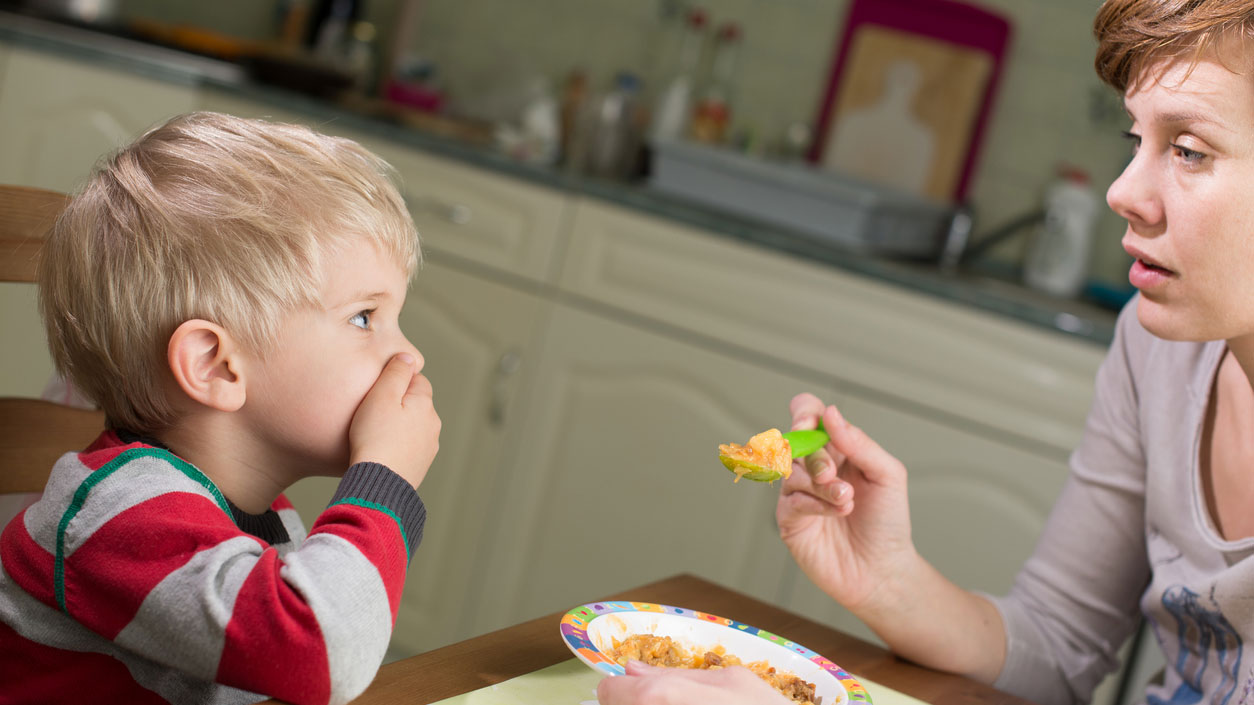
Autism & Feeding Kids - More Than Picky Eating
Throughout my career as a Speech-Language Pathologist and Feeding Therapist I have worked with autistic children with feeding difficulties and differences. Many children develop predictable and structured ways of engaging with food and mealtimes, which can help them feel safe, regulated, and in control; however, this can sometimes lead to nutritional deficiency and can impact growth. Parents experience stress, burnout, and overwhelm when it comes to feeding their child. They frequently report that their child previously ate a variety of foods and then gradually began to eliminate foods from their diet. This is heartbreaking for parents and they feel powerless, as they watch their child drop one food after the next. In this blog, I will talk about why these kids have feeding challenges/differences and offer strategies to help. I have created a free downloadable checklist with tips to help these kids on their feeding journey (you can find the link at the bottom of this page).
Picky Eating and Neurodiversity
Autistic kids may demonstrate food selectivity or "picky eating" and may be very specific about brands, shapes, colours, and textures. For some kids food selectivity can be mild and for others it's much more severe (e.g., only eating 1-2 foods). Some autistic children are only able to eat purees/blended meals (even as they get older), while others prefer crunchy finger foods. Some kids are not able to self-feed and others prefer to eat alone, away from others that are eating. Every situation is unique and no two children ever walk along the same feeding path.
I have witnessed a change over the course of my career - a shift toward embracing and accepting neurodiversity. As a mother of child with ADHD and Sensory Processing Disorder (SPD), I couldn't be more on-board with this evolution. I struggled for years to try to get my son's teachers to accept and understand that he learned differently than other kids - that his differences were not "bad" behaviours...perhaps he was communicating that he was frustrated and overwhelmed in the classroom. Sending him to the hall for not being able to pay attention or stay in his seat, was a missed learning opportunity for a kid that was already struggling to keep up with traditional teaching methods and classroom expectations.
I recently had the opportunity to learn from and listen to autistic adults sharing their experiences around food and eating (I encourage you to listen to Laura Hellfeld and Scott Neilson). They express a desire for society to embrace neurodiversity, which includes normalizing different ways of eating. Scott and Laura talked about requiring accommodations in order to eat - like watching a screen and turning down the lights. They expressed that they are not able to tune into their internal hunger cues "until the external calms down." They described their preferred foods as "safe, comforting, and a form of self-care." One of the autistic adults described her "same foods" as "a friendship - like sitting down with a really great friend."
Prevalence of Feeding Difficulties in Autistic Kids
Autistic kids have a significantly higher incidence of feeding issues than typically developing children. Feeding problems occur in about 25% of all children and in 80% of those with a developmental disorder. The estimated prevalence of feeding problems in autistic children has been reported to be as high as 90%. Research has shown that autistic kids may be up to five times more likely to demonstrate selective feeding. They often demonstrate some or all of the following feeding challenges:
- Reduced variety of foods (e.g., only eat 1 food group, texture, brand, or colour)
- Strong preference for carbs/grains/crunchy foods
- Specific routines about the feeding environment or tools (e.g., bowls, utensils, and cups)
- Difficulty accepting new foods (e.g., gagging, fear, crying, running away from the table)
- Challenges accepting changes in food preparation (e.g., slight changes in texture/colour or temperature can lead to complete refusal of a meal)
- Difficulty transitioning to table foods (e.g., preferring pureed foods or liquid nutritional supplements)
- Challenges with self-feeding
- Preference for fast foods (e.g., McDonald’s fries only or a specific type of pizza)
- Difficulty tolerating changes in the mealtime environment / routine
- Unable to eat at school or someone else’s home (Many autistic kids will go all day at school without eating).
- Accepting food from one family member/feeder
- Benefiting from distractions while eating to stay regulated (e.g., table, TV, or phone)
- Challenges sitting with others when eating / gagging when watching others eat or smelling other people's foods

Some kids with autism are so specific about brands that parents express extreme anxiety should the food brand be discontinued or unavailable. These kids are often unable to eat if their preferred or "safe food" is not available. They would rather go without food than eat something outside of their safe repertoire of foods.
I once was working with 3-year-old autistic twins that ended up in the emergency room with dehydration because their parents had been advised by a health professional to "Just stop offering their preferred foods - they will eventually get hungry and start eating new foods." At the time that they received this advice, the twins were only able to eat 2 foods - one twin ate crackers and milk and the other ate canned alphaghetti and milk. When I began working with them we immediately resumed offering their safe foods and started a program to help them learn about new foods through food play and food chaining (exposure to foods that were very similar to the foods they accepted, like other square, bland crackers and other varieties of chopped pasta in red sauce). Over time they began accepting new foods, while continue to grow and feel safe and regulated at mealtimes.
Sensory Processing and Sensory Overload at Mealtimes
Mealtime challenges for autistic children can be strongly related to how the child’s sensory system processes information (e.g., heightened sensitivities to sound, smell, taste, touch, temperature, and movement). Difficulty with transitions can cause some children to be unable to eat or eat limited amounts to reduce the number of transitions with which they must cope. Studies show that three-quarters of autistic children also have sensory-processing disorder (SPD).

These kids often find it difficult to cope with the sensory and communication stresses at mealtimes. Eating is one of the only things we do as humans that involves all of our senses at the same time.
- Touch - the feeling the food on our hands and in our mouth, on our lips, tongue, and teeth
- Smell - we smell our own food and foods that other are eating around us
- Sound - crunching, biting, chewing, gulping, talking, chairs squeaking, utensils clinking
- Sight - lights, foods, people
- Taste - salty, sweet, sour, savoury, bitter
- Vestibular - our sense of movement and balance
- Proprioception - the position and movement of our body on our seat
- Interoception - internal signals inside our body like hunger, thirst and fullness, our heartbeat/breathing
That's a lot happening all at once during mealtimes! Autistic kids with Sensory Processing Disorder (SPD) or sensory sensitivities may feel overwhelmed and unsafe at mealtimes. They may compensate by limiting sensory input (e.g., only eating familiar foods) and controlling their mealtime world (e.g., inflexible about changes in the mealtime routine). Limiting sensory input allows them to feel safer. Mealtimes can present sensory overload for some children. For other kids that are sensory-seeking, they may gravitate toward crunchy foods and benefit from movement and deep pressure (e.g., weighted vest) during mealtimes. These kids benefit from accommodations while eating to allow them to be more successful at mealtimes.
Oral-Motor Delays and Autism
Neurodivergent kids may have oral-motor (mouth muscle) difficulties and find it challenging to co-ordinate the movements required to bite, chew, and swallow foods. A large majority of research (81%) has demonstrated a high occurrence of oral-motor difficulties among autistic individuals. If kids feel unsafe when eating certain foods or textures this can lead to food refusal. Kids do this to protect themselves. Imagine if you felt like you might gag or choke every time you tried to eat a certain food or texture. Some of these kids benefit from feeding therapy with a Speech-Language Pathologist or Occupational Therapist to help improve their mouth muscle skills so they are able to eat with more efficiency, safety, and comfort.

Gastrointestinal (GI) Problems and Autism
GI or stomach issues are among the most common medical conditions associated with autism. GI issues include chronic constipation or diarrhea and/or irritable and inflammatory bowel conditions. GI conditions and discomfort can have a significant impact on a child's feeding status. If kids don't feel well, it's hard for them to eat well. If they have learned that certain foods cause them to have tummy aches or reflux, they may associate eating with pain and avoid certain foods.
If your child is demonstrating GI/stomach issues, I suggest speaking with your child's physician for medical support. Often treatment of gastrointestinal issues will help with your child's feeding progress.
Feeding Therapy and Autism - Is is Behavioural?
I believe that every feeding intervention for autistic kids should be comprehensive and involve a screening for oral-motor, sensory processing, and medical/gastrointestinal issues. If a child is demonstrating challenging feeding behaviours, it should not be assumed that the feeding issue is a "behavioural issue." Behaviour is a form of communication.

As a Feeding Therapist, I also believe in treating all children with respect when approaching their feeding difficulties using a responsive, play-based, child-directed, and accepting approach. I love using language like "Food Explorer, Food Adventures, and Food Science" to help kids build confidence in their ability to learn about new foods. I use a mixed-bag of approaches when working with autistic kids - sensory steps, oral-motor strategies, family meals, food chaining, and working through mealtime challenges are just a few of the ways I help kids move toward improved eating. There is no one particular feeding approach or one-size-fits-all method when supporting children on their feeding journey.
If I was helping a child learn about broccoli, we might do this:
-
“My learning food is called broccoli.”
-
“It’s green and looks like a mini tree!”
-
“It has bumps on the top and the stem feels smooth on the bottom.”
-
“It smells like a garden.”
-
“It feels bumpy and ticklish when I touch it to my lips.”
-
“I made funny green moustache with my broccoli!”

For all children, it's important to develop trust and create a safe space for eating and learning. This means that they don't have to "take a bite." Kids do best when we follow their lead and teach them baby steps toward meeting new foods. This means respecting when they say no and not pushing them to "try it." I aim to treat children the same way I would want to be treated around food and at mealtimes. I wouldn't want you to pressure me to take a bite of food that I was too scared to even touch. We all eat differently....we all have our comfort foods...it's important to consider that neurodivergent eating patterns are ok.
How to Help Your Child
As a starting point, I suggest helping your child to meet new foods using a low-pressure, play-based approach (e.g., food play outside of mealtimes). Follow your child's lead in play and think about ways you could incorporate real food into play activities. Click here for Food Play Ideas!
I also love giving kids helping jobs around food. This doesn't mean making a whole recipe - just give your child one discrete task like stirring, pouring, chopping, or serving foods with colourful tongs or a digger fork! I find many kids love being "the server" and serving other people's plates at mealtimes.
Be silly with food - laugh...explore...learn.

I have worked with and witnessed children with severely restricted food intake progress toward eating new foods, demonstrating improved nutrition, and experiencing happier family mealtimes. It's important to find a safe space for kids to learn about and interact with new foods. If they feel anxious or pressured, they will enter "fight or flight" - this means their appetite is decreased and "behaviours" (communication) may escalate (fight) or they may immediately want to get away from the situation (flight). If they feel calm and regulated they will be more successful with food interactions.
I like to help parents manage their expectations when helping kids to learn about new foods by breaking food acceptance into tiny little steps. Some of the kids I see will gag just looking at a food or watching others eat. In this situation, how could we possibly expect the child to be able to take a bite of the food? Instead we might work on gradually becoming more comfortable being around the food through gentle, play-based activities. Little steps can lead to big changes.
In time parents often come to respect that even though they want their child to eat certain foods - those foods may not work for their child's body and sensory system. We are all unique humans with different feelings, memories, thoughts, and sensory systems. Eating and food is a personal relationship and we don't all have to be "foodies". Many kids I support drink their nutrition, some eat blended meals, others eat only a handful of foods. Many struggle eating around others and need a screen or book while eating to feel calm and regulated. If these kids are nutritionally balanced and feel safe and respected around food, then it's ok if they eat in their own unique way.

Click here for your free download: 12-Tips to Help Kids with Autism and Feeding Issues
References
Sensory Processing in Autism: A Review of Neurophysiologic Findings - Marco & Hill (2011).
Your 8 Senses - The Star Institute (2022)
Autism Spectrum Disorder and Digestive Symptoms - Zeratsky - The Mayo Clinic
Same Food As Self-Care: Laura Heffeld Neurodivergent Nurse Consulting and Scott Neilson, Autistically Scott (2023)
Rethinking Mealtime Expectations and Supporting Neurodivergent Eaters, Chicago Feeding Group Spotlight Series: Laura Hellfeld (2023)
Setting Priorities: Supporting Autistic & ND Young People to Eat, Laura Heffeld Neurodivergent Nurse Consulting and Scott Neilson, Autistically Scott (2023)

